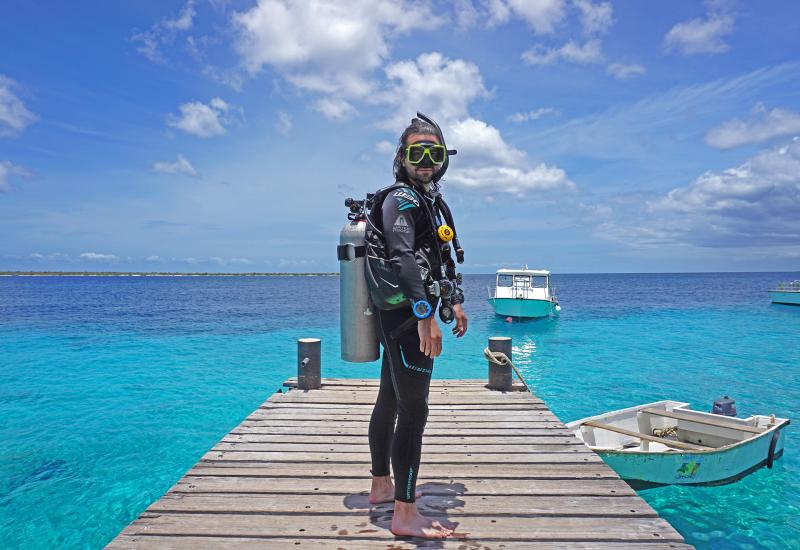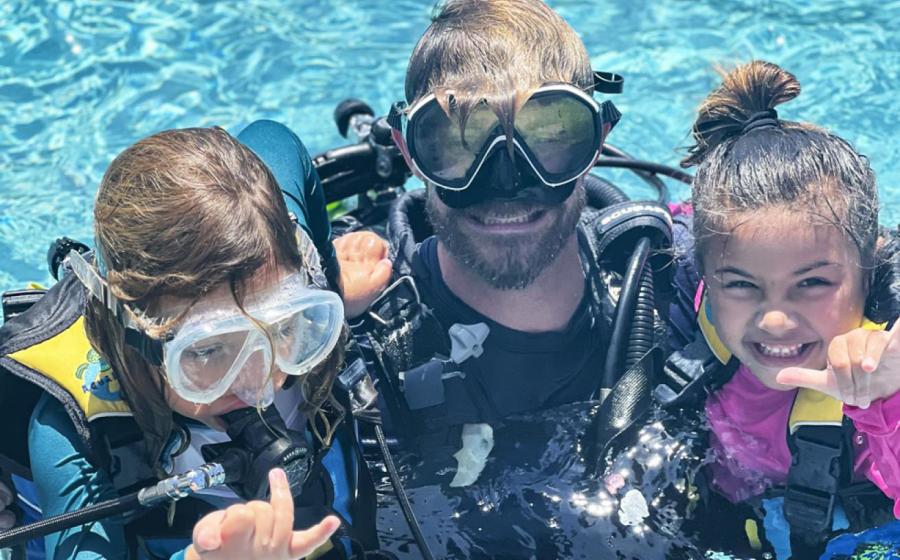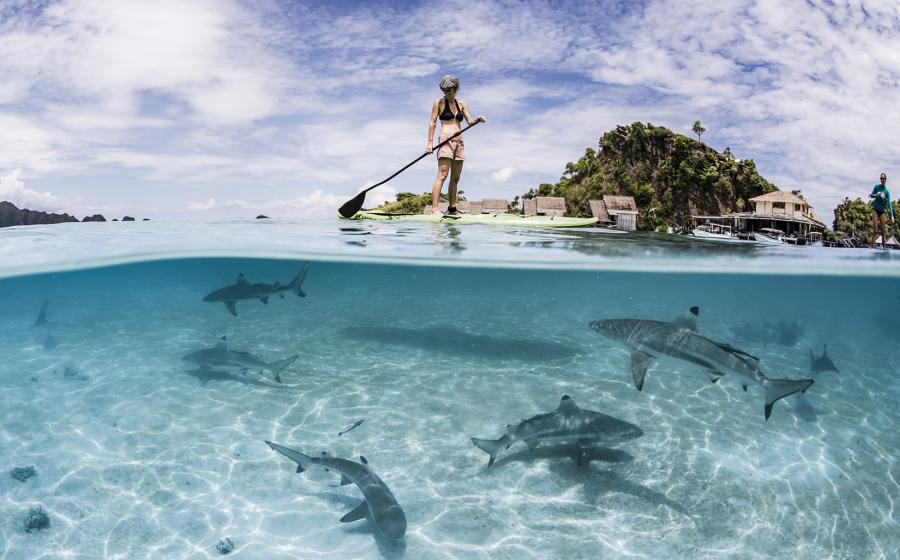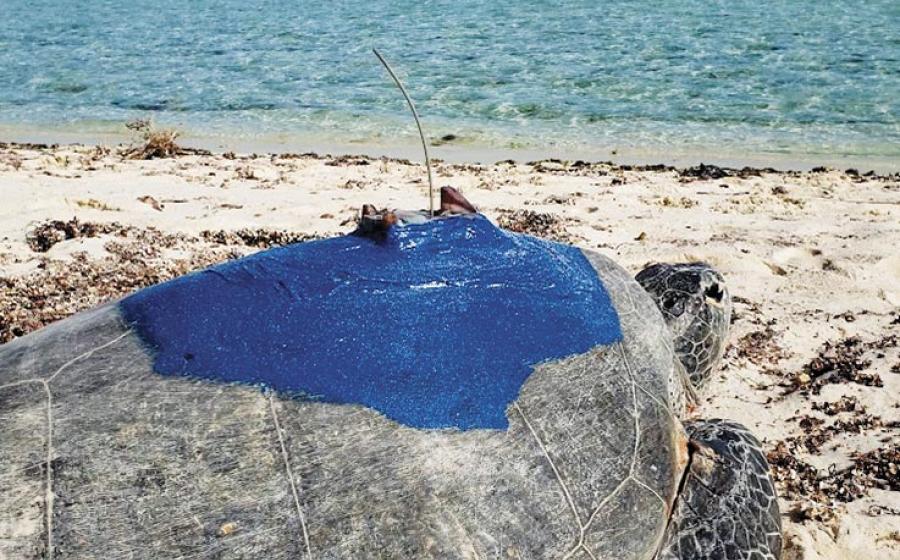How to Make a Scuba Diving Negative Entry Like a Pro
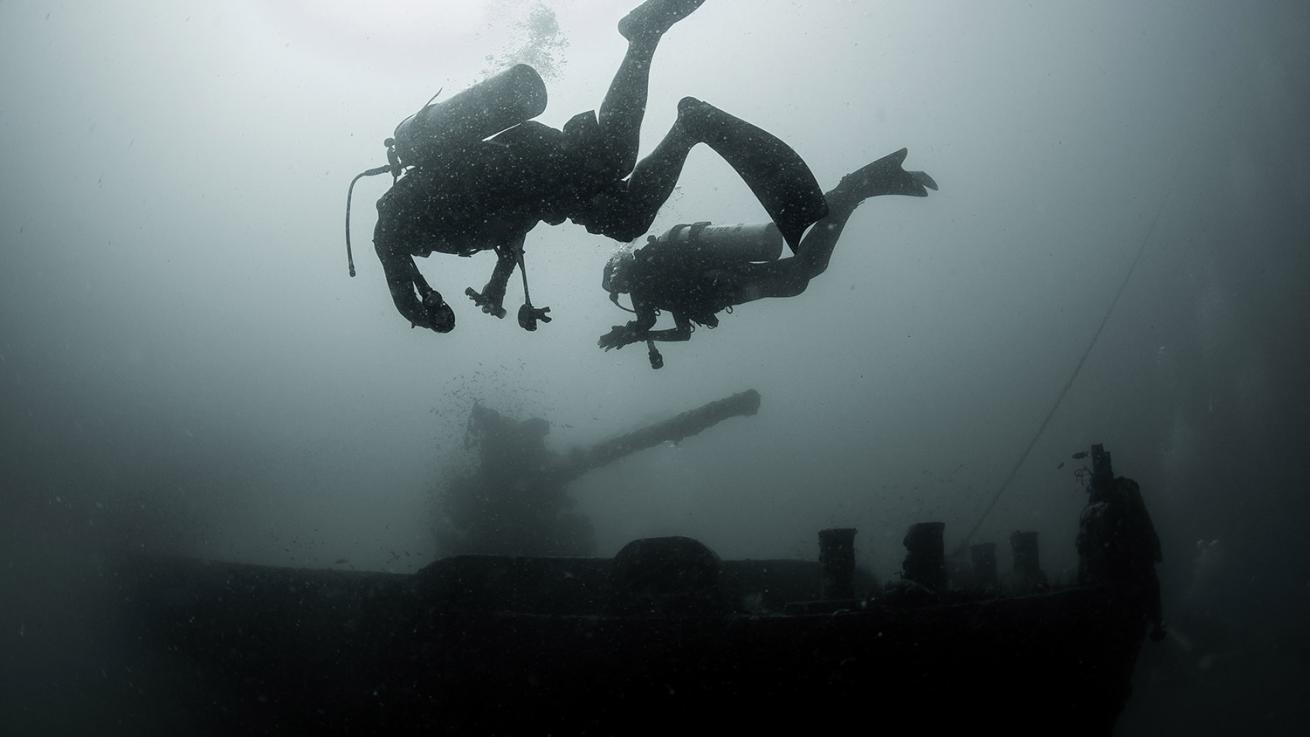
Tharapong Talubnak/ShutterstockA negative descent is often performed when strong current is present and you want to hit a specific underwater target, such as a shipwreck.
It’s been said that it’s the aquatic version of base jumping. A negative descent is entering the water as you normally would, but making sure all the air is out of your BC so that you don’t pop back to the surface. For most divers, it's not an issue. But if you've got ear-clearing issues, it can be more challenging.
I had made a few negative descents early in my diving career, mostly when wreck diving and when surface current was present, but as I got older, I began to struggle with ear-clearing issues that made making rapid descents, particularly head-first ones, painful. The first time it led to me calling a dive was in Grenada in 2010.
Grenada is a Caribbean destination famed for its shipwrecks — and drift diving. It was only my second day of diving when we planned to drop down on the world-famous Bianca C. The day before, our diving had been on the shallower Veronica L, followed by a pretty fast but manageable drift on Shark Reef, and then an afternoon dive spent leisurely touring the sculptures in Molinere Bay in very shallow water with seemingly endless bottom time. Still, despite the beginner-easy nature of these dives, my ears were acting up.
I had been looking forward to diving on the Bianca C, which is often conducted as a “bounce dive” — we’d descend to our maximum depth of about 130 feet, spend about 10 minutes and then ascend. On paper, the profile would look like a gigantic, narrow capital-letter V. The intended target was roughly mid-ship where we hoped to explore the former luxury yacht’s swimming pool. Due to strong surface current (current was present on the descent and at depth, too), we’d be making a negative descent. I knew that swimming head-first, kicking like hell, would make clearing my ears impossible, so I made the difficult decision to skip the dive.
Negative descents are not recommended for divers who need a long time to equalize. But as long as you can clear your ears relatively easy (and I advise starting on the boat, to help open your Eustachian tubes), you can make a perfectly planned negative descent following our tips. We recommend using this entry when there are waves or a strong surface current.
Chances are you learned only the giant stride scuba entry — with your BC holding a bit of air so that you remained positive at the surface — during your open water training. Both backroll and giant stride entries can be done as negative descents. You use the exact same techniques for those entries but with an EMPTY BC instead of a full one. By emptying your BC completely of air, you start your descent upon hitting the water. The boat captain will drop you up-current from the dive site so that by the time you start your descent, you will be on target for hitting the reef, wreck or other intended spot.
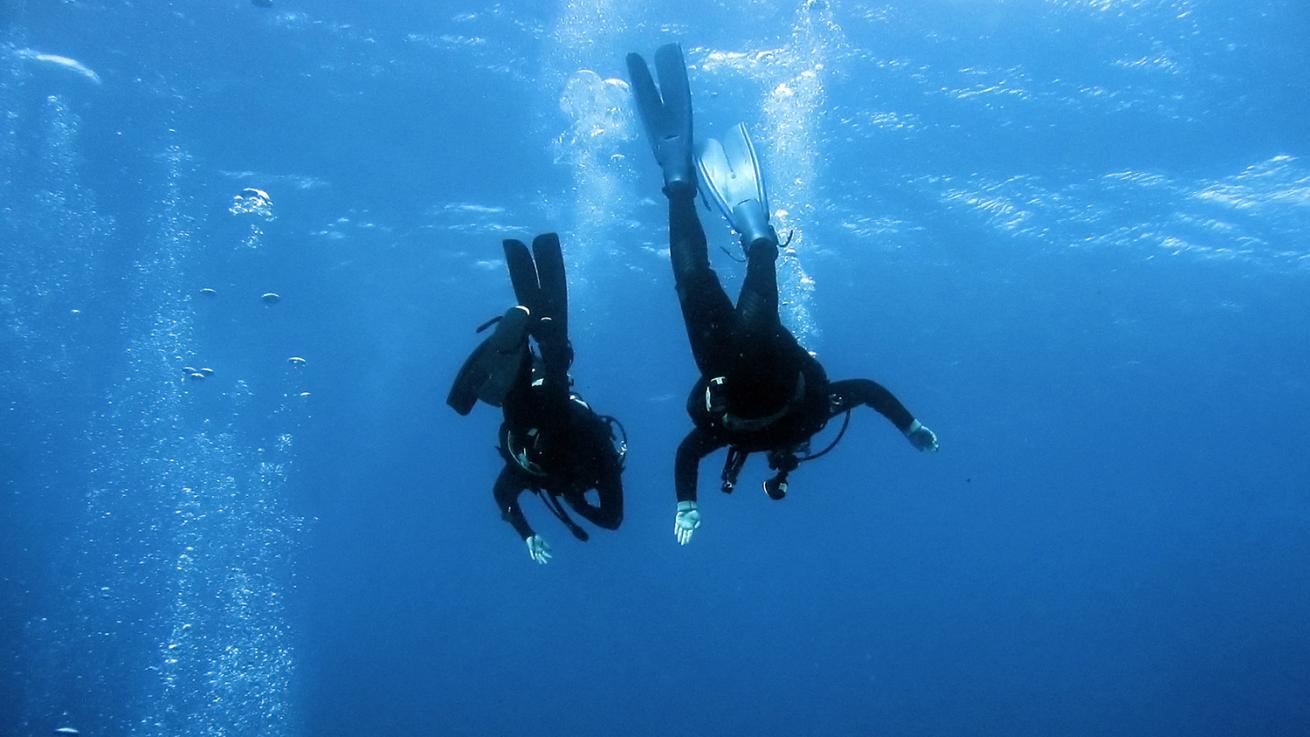
Ian Scott/ShutterstockThe key to a successful negative descent is emptying your BC completely of air so that you’re negatively buoyant as soon as you hit the water.
Here are the steps that are crucial for pulling this descent off successfully:
1) Make sure you are completely geared up and that your gear is streamlined.
2) Ensure you are correctly weighted. If you’re not sure, add a couple of extra pounds to help you get down as you can’t go back to the boat to get more.
3) When you begin your entry, hold your mask and regulator in place so they don’t get knocked off when you jump.
4) As you hit the water, blow all the air from your lungs with one long exhale.
5) Keep your body straight, with your arms tucked in along your sides, so your momentum can propel you down. Once you’re a few feet down, position yourself into a head-down position unless a feet-first descent will work for you.
6) Establish contact with your buddy, divemaster or group. Make sure everyone is OK to continue the descent together.
7) Equalize often. Don’t ignore the pressure in your ears.
8) Check your gauges. If you’re not using a descent line, you’ll need to make sure you don’t exceed your intended depth.



